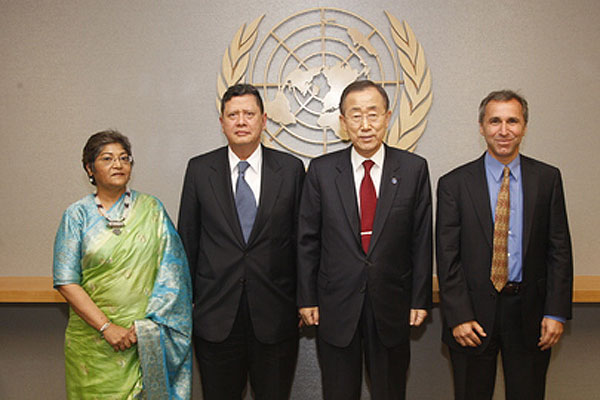The Island newspaper continues to publish leaks from the report produced by the Panel appointed by the UN Secretary General to look into post-war accountability in Sri Lanka. Groundviews has covered in detail the Executive Summary and Parts 1, 2, 3 and 4 of the leaks.
The Island published today Part 5, which focusses on the conditions faced by IDPs in the aftermath of the violent denouement of the war in the Vanni.
As before, we provide context and background information to frame these highlights. Much of the context also comes from dozens of articles published from May 2009 onwards on Groundviews, including many eye witness accounts and detailed reports on ground conditions in the IDP camps. The issues and concerns flagged in these articles, photos and audio recordings in fact pre-figure and underscore those featured in the leaked UN Panel’s report. The category ‘Vavuniya‘ has over 100 articles and reports worth revisiting for the content and the vibrant debate they inspired on this site.
“The plight of civilians who had survived the conflict in the Vanni did not end when they entered Government-controlled areas… In general, the Government gave priority to security considerations over the humanitarian needs and well-being of the IDPs.”
“When they emerged from the conflict zone, many civilians were fearful of the reception they would receive… many families were divided and placed in separate camps; provision for family tracing and reunification was inadequate, and the ICRC was not authorised to play a role in this regard.”
“Family separation left many women on their own and vulnerable to sexual violence… Forced recruitment of children also took a heavy toll on mothers.”
“The conflict took a particular toll on the young. Children as young as 14 had been the target of forced recruitment by the LTTE. Measures to avoid recruitment, including early marriages, had a detrimental impact on the health of young girls. In addition, thousands of children suffered violations such as killing and maiming due to the shelling. Some were killed because they had ventured out of the bunker to play. Children were particularly vulnerable to horrific injuries as shrapnel ripped at their small limbs.”
” Likewise, the elderly were particularly affected by the conflict… Some were abandoned when their relatives fled. Others had nobody to care for them in the IDP camps and died of neglect, exhaustion and preventable diseases.”
“People were then transferred, often by foot, to initial screening sites set up in places such as Kilinochchi Pulmoddai and Padaviya. At these sites, the SLA called those who had been associated with the LTTE, even for a day, to identify themselves and surrender, and promised vocational training and employment abroad for those who did. Instead, those identified as LTTE were taken to separate camps.”
“The Government purposefully prevented international humanitarian agencies from accessing the initial screenings sites.”
“Some patients disappeared from the hospitals.”
“Authenticated footage and numerous photographs indicate that certain LTTE cadres were executed after being taken into custody by the SLA. Photographs available to the Panel show many dead bodies of cadres (or possibly civilians), some with their hands tied behind their back.”
“When first detained by the SLA, some suspected LTTE cadre were also tortured. Photographs show bodies with signs of torture…”
“Rape and sexual violence against Tamil women during the final stages of the armed conflict and, in its aftermath, are greatly under-reported.”
“Many photos and video footage, in particular the footage provided by Channel 4, depict dead female cadre. In these, women are reportedly shown naked or with underwear withdrawn to expose breasts and genitalia. The Channel 4 images, with accompanying commentary in Sinhala by SLA soldiers, raise a strong inference that rape or sexual violence may have occurred, either prior to or after execution.”


